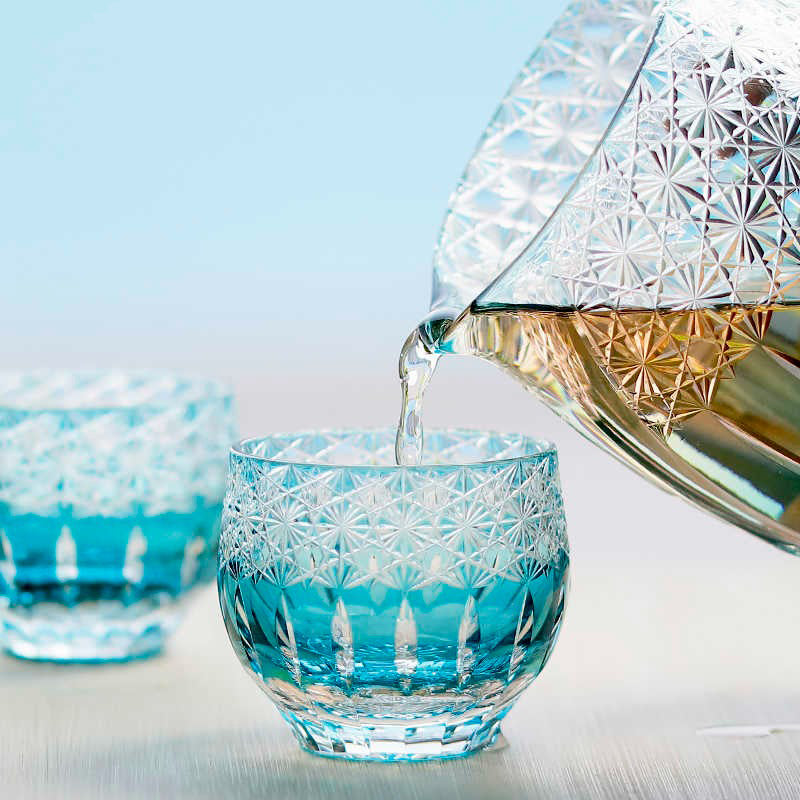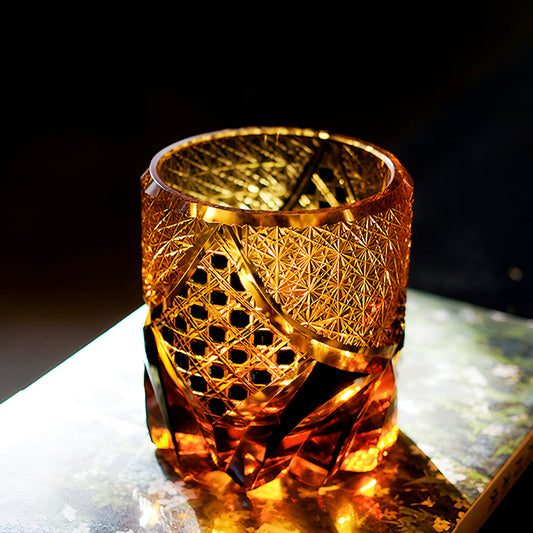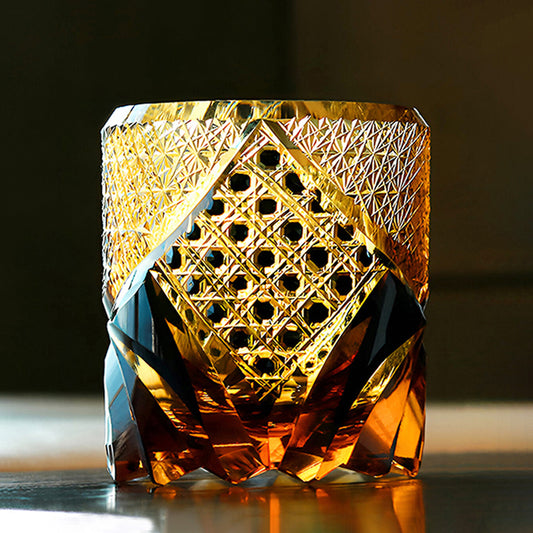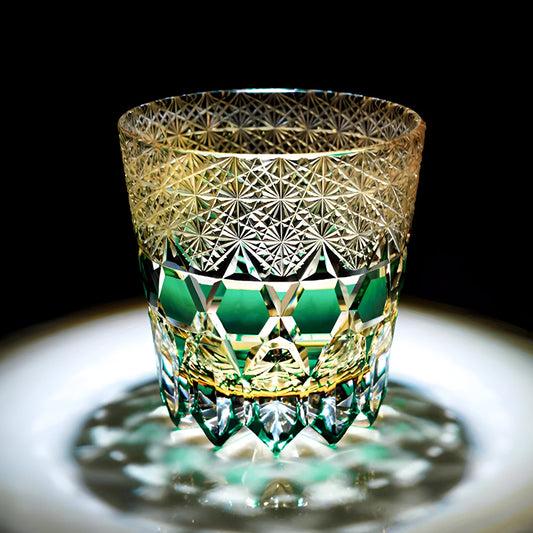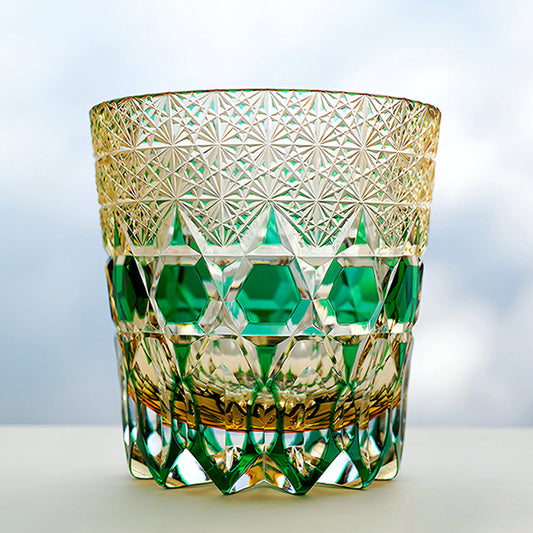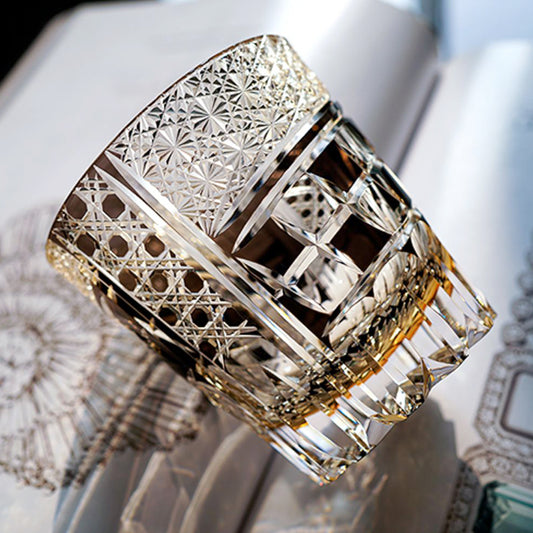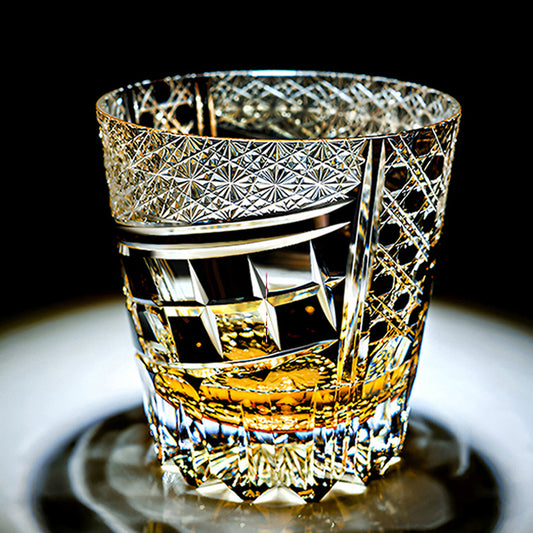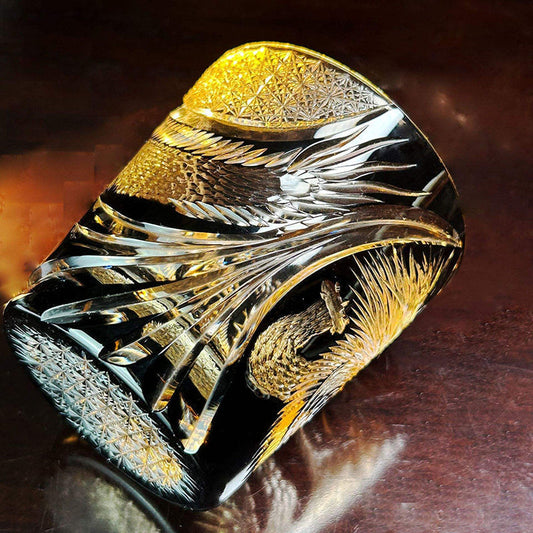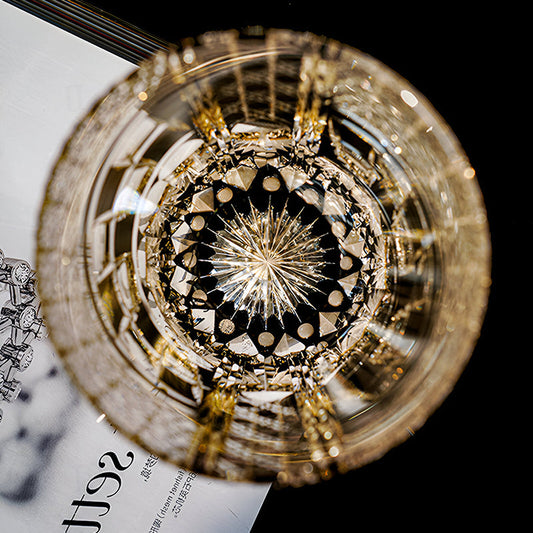"Kiriko" refers to the process of processing and polishing glass vessels to form beautiful patterns. It is one of Japan's top glass carving techniques, and Edo Kiriko naturally refers to the craft that gradually developed in the late Edo period in Edo (present-day Tokyo).
Compared to Japan's more luxurious cut glass craft, 'Satsuma Kiriko,' Edo Kiriko is known as 'a culture nurtured by the common people.' The latter originated and developed among the public. Although Edo Kiriko craftsmanship is exquisite and demanding, many of the products have been closely associated with the daily lives of ordinary Japanese people for over 200 years, rather than being merely unattainable art.
Junichi Kogatani is a well-known artisan in the Edo Kiriko world. He is the third-generation successor of the Kogatani family's Edo Kiriko and one of the remaining 17 Edo Kiriko artisans in Japan.

While Edo Kiriko starts with ordinary glassware, after artisans meticulously control the cutting depth, angle, and texture design, different colors can be reflected from various parts through the fine manipulation, showcasing a range of hues.
The most common Edo Kiriko piece typically undergoes four key crafting processes.
First is "Grading":
This is the fundamental step in making Edo Kiriko. The first step in the Kiriko process is to draw horizontal and vertical lines on the glassware (commonly glass cups, vases, glass decanters, etc.) using a grading device.

Next is "Rough Carving":
This step primarily involves polishing the graded base on a diamond grinding wheel. Artisans need to visualize the patterns in their minds and then carve the initial lines on the glass surface as the 'framework.'

After "Rough Carving" comes "Fine Carving":
The differing names of these two processes indicate the higher requirements in terms of the artisan's experience, technique, and the tools used for 'Fine Carving.'
The grinding wheel used for fine carving needs to be smoother and more detailed. Junichi Kogatani is diligently carving intricate patterns on the 'framework' lines created during the rough carving stage.

Unlike many other crafting processes, Edo Kiriko does not involve pre-drawn pattern sketches. Any error in a single line during either rough or fine carving stages means that all the previous carvings are ruined.
It is the unique design inspirations and seamless craftsmanship of artisans that imbue ordinary glass with a radiant charm.
Finally, after surface polishing, a piece crafted through the Edo Kiriko technique is completed.
Even though it may seem to consist of just a few primary steps, in the world of Edo Kiriko, creating a relatively simple pattern like the Dragon Scale pattern is considered a hallmark of a skilled artisan.
From the initial apprenticeship in Edo Kiriko to mastering the craft, it generally takes seven to eight years, or even longer, for a newcomer to continually hone their skills. This is not to mention artisans of Junichi Kogatani's caliber, who are considered national treasures in Japan.
Since the incorporation of Edo Kiriko into Japanese daily life, it has primarily focused on vessels such as cups, vases, and other containers. However, as modern society becomes more varied, people's appreciation for Edo Kiriko has gradually extended to more detailed aspects of daily life.

Junichi Kogatani once accepted a customized 'order' from a customer for a household light switch.
Unlike glass cups and vases, switches are small and flat, requiring more delicate control over force by the artisan. In order to fulfill the customer's wishes and create a light switch that combines utility and aesthetics, Junichi Kogatani spent three weeks from sketching to cutting and carving to complete the piece.
Creating modern artifacts through traditional craftsmanship not only ensures the continual passing down of ethnic craft traditions but also allows more people to experience and appreciate this craft. This is a desire that craftsmen worldwide tirelessly pursue.
To Junichi Kogatani, while wine glasses and vases may not be used every day, and expensive art pieces may deter many ordinary people, the light switch in a house, touched and relied upon every evening, can bring a bit more warmth and homeliness to everyone returning home.


